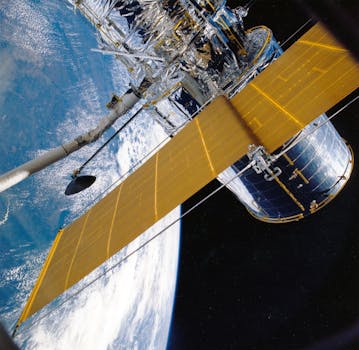
From Ground to Sky: The Evolution of Satellite Telecommunications Technology
Satellite Telecommunications technology has come a long way since its inception, transforming the way we communicate and access information. The journey from ground to sky has been marked by significant milestones, innovations, and advancements that have enabled us to stay connected like never before.
The history of satellite telecommunications dates back to the 1950s, when the first artificial satellite, Sputnik, was launched into space. This marked the beginning of a new era in space exploration and communication. The first commercial satellite, Intelsat 1, was launched in 1965, providing transatlantic communication services. Since then, the technology has evolved rapidly, with significant improvements in satellite design, launch vehicles, and communication systems.
Early Years of Satellite Telecommunications
In the early years, satellite telecommunications were primarily used for international telecommunications, providing connectivity between countries and continents. The first satellite communications systems were based on geostationary satellites, which orbit the Earth at an altitude of approximately 36,000 kilometers. These satellites were used for television broadcasting, telephone services, and data transmission. The introduction of geostationary satellites revolutionized global communication, enabling real-time communication between distant locations.
One of the significant advancements in the early years of satellite telecommunications was the development of the Intelsat system. Intelsat, or the International Telecommunications Satellite Organization, was established in 1964 to provide global satellite communications services. The first Intelsat satellite was launched in 1965, and it provided transatlantic communication services, including television broadcasting and telephone services.
Advances in Satellite Technology
Over the years, significant advances have been made in satellite technology, enabling faster, more reliable, and cost-effective communication services. Some of the key advancements include the development of new satellite designs, such as high-throughput satellites (HTS) and very high-throughput satellites (VHTS). These satellites offer higher bandwidth and faster data transfer rates, making them ideal for applications such as broadband internet, mobile connectivity, and high-definition television broadcasting.
Another significant advancement is the development of low Earth orbit (LEO) satellites. LEO satellites orbit the Earth at an altitude of approximately 2,000 kilometers, which is much lower than geostationary satellites. This lower altitude enables faster data transfer rates and reduced latency, making LEO satellites ideal for applications such as satellite broadband, IoT connectivity, and Earth observation.
Current and Future Developments
Today, satellite telecommunications play a critical role in global communication, providing connectivity to remote and underserved areas, as well as supporting a wide range of applications, including broadband internet, mobile connectivity, and Earth observation. The current and future developments in satellite telecommunications are focused on providing faster, more reliable, and cost-effective communication services.
One of the significant current developments is the launch of satellite constellations, such as OneWeb and Starlink. These constellations consist of hundreds or thousands of LEO satellites, which work together to provide global satellite broadband services. These constellations have the potential to provide high-speed internet access to remote and underserved areas, bridging the digital divide and enabling global connectivity.
In conclusion, the evolution of satellite telecommunications technology has transformed the way we communicate and access information. From humble beginnings to current advancements, the technology has come a long way, enabling us to stay connected like never before. As the technology continues to evolve, we can expect faster, more reliable, and cost-effective communication services, which will have a significant impact on global communication and connectivity.




